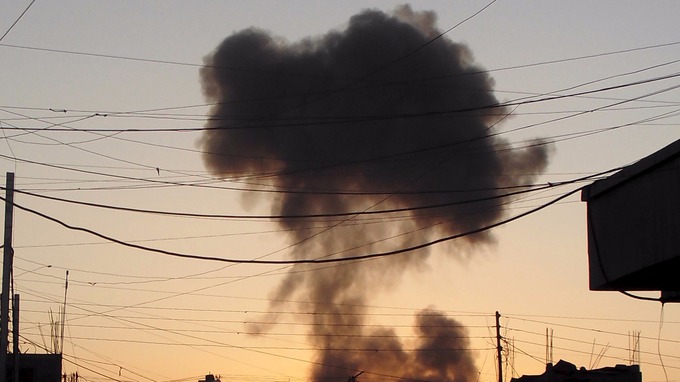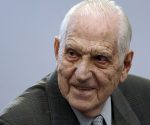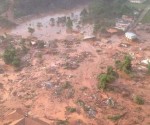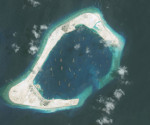Iraqi Forces Lead The Fight To Re-Take Ramadi
As Iraqi forces and Shi’ite paramilitaries prepare to retake Ramadi after its fall to the Islamic State just one week ago, the Islamic State is now sending more of its fighters into Ramadi.
Iraqi forces pushed and retook ground east of Ramadi following a counter-offensive on Saturday, a week after it was overrun. On Monday forces also regained a rural area south of the city.
Iraqi forces supported by Iran-backed Shi’ite militia and locally recruited Sunni tribal fighters have retaken parts of al-Tash, 20 km (12 miles) south of Ramadi, said police sources. Pro-government Sunni tribal fighters and the army laid land mines to defend areas around Baghdadi, which were subjected to seven Islamist suicide car bombs on Sunday. Baghdadi is a key settlement northwest of Ramadi controlling routes to a major Iraqi air base.
The Syrian air force bombed buildings taken by the Sunni militant group who are notorious for destroying historical ruins. The air force hit Islamic State “hideouts” and killed many Islamists around Palmyra’s military air base, according to Syrian state media.
The Islamic State has reportedly executed at least 217 people, including children, since it took the Palmyra area 10 days ago, according to the British-based Syrian Observatory for Human Rights. 300 soldiers were also killed before the Syrian city was captured, the monitoring group said.
The Islamic State sent reinforcements into Ramadi on Monday while preparing for battle against the advancing security and paramilitary forces on the provincial capital, 110 km (70 miles) northwest of Baghdad. Trucks carrying Islamic State fighters arrived on Sunday evening, said residents of Ramadi. “I saw two trucks pull up outside with dozens of fighters carrying arms running quickly into nearby buildings and taking cover,” said one of the residents. At least 40 fighters had jumped out of three trucks that arrived in the southern al-Tamim district on Sunday evening, said another resident.
“They were carrying weapons and wearing mostly khaki dress with ammunition belts wrapped around their chests,” said Abu Mutaz, a resident, “They were talking in an Arabic dialect, they were not Iraqis.”
The attack in Ramadi and Palmyra were the Islamic State’s biggest achievements since the U.S. led coalition launched air-raids against it last year. The simultaneous almost-victories against the Iraqi and Syrian armies compelled the US to review its strategy of bombing from the air while leaving fighting on the ground to local forces.
U.S. Defense Secretary Ashton Carter on Sunday accused the Iraqi army of abandoning Ramadi while they easily outnumbered the IS fighters. A spokesman for Iraqi Prime Minister Haidar al-Abadi dismissed the comments as “untimely and surprising at a time when Iraqi security forces are preparing to launch a counter offensive to retake Ramadi”.
The general in charge of Iran’s paramilitary activities in the Middle East termed it as a failure of the US in confronting the Islamic State.
“Today, in the fight against this dangerous phenomenon, nobody is present except Iran,” said Major General Qassem Soleimani, who is often seen on the battlefields of Iraq. Turkey and the United States had agreed in principle to give air support to some Syrian opposition forces, said Turkey.
The US said it and its allies carried out 10 air strikes against Islamic State militants in Syria and 25 strikes in Iraq since Sunday.
Most of the strikes in Syria were in the northeast, near Al Hasakah, while in Iraq, Islamic State positions were attacked near Baghdadi, Bayji, Fallujah and Mosul, among other sites. After the capture of Ramadi, the Islamic State took control of Palmyra, a site of some of the world’s most extensive and best-preserved Roman ruins and home to 50,000 people. The Islamic State has not been reported to have been destroying Palmyra’s ruins and artifacts as of yet, the Observatory said.
Proclaiming a caliphate to rule over all Muslims from the territories they hold in Syria and Iraq, the IS have carried out mass killings, including beheading’s, in towns and cities they have captured, and destroyed ancient monuments, which they consider evidence of paganism.
Iranian-backed Hezbollah has backed Syrian President Bashar al-Assad in his country’s civil war. The group’s leader, Sayyed Hassan Nasrallah, pledged to clear the border of Sunni Muslim militant groups that have carried out attacks on Lebanese territory. Hezbollah fighters captured two hilltops from al Qaeda’s Syria wing, the Nusra Front, in close proximity to the Lebanese border and killed dozens of enemy combatants in Syria, the Hezbollah-run al-Manar television reported on Monday.






